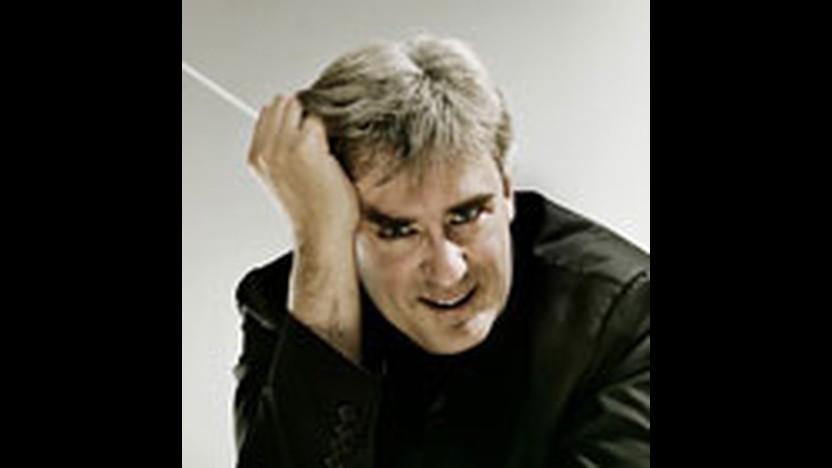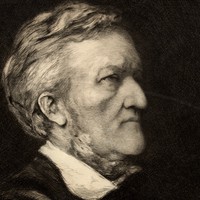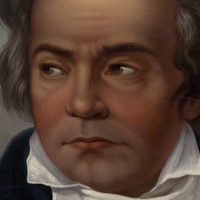Wagner's Siegfried Idyll



(Duration: 17 min)
The great love of Richard Wagner’s life was Cosima, the illegitimate daughter of Franz Liszt and his longtime mistress. She was 24 years younger than Wagner, and they were both married to others when they met, but still they consummated their infatuation in 1864, and she gave birth to Wagner’s daughter Isolde the next year. Cosima spent long periods at Wagner’s house at Tribschen, overlooking Lake Lucerne in Switzerland, and they had three children together by the time her divorce went through in 1870, allowing them to marry a month later.
Wagner capped that momentous year with an extraordinary birthday present for his thirty-three-year-old bride. On Christmas morning (she was actually born on the 24th, but she celebrated her birthday a day later), he woke up Cosima with the sounds of a fifteen-piece chamber orchestra piled onto the staircase outside her bedroom. She described the experience in her diary:
When I woke up I heard a sound, it grew ever louder, I could no longer imagine myself in a dream, music was sounding, and what music! After it had died away Richard came in to me with the five children and put into my hands the score of his Symphonic Birthday Greeting. I was in tears, but so, too, was the whole household; Richard had set up an orchestra on the stairs and thus consecrated our Tribschen forever! The Tribschen Idyll — thus the work is called!
The title Wagner inscribed on the original score was Tribschen Idyll with Fidi-Birdsong and Orange Sunrise, presented as a symphonic birthday greeting to his Cosima by her Richard. “Fidi-Birdsong and Orange Sunrise” were references to the sights and sounds Wagner remembered from the early morning birth of their son Siegfried, nicknamed Fidi. The familiar title Siegfried Idyll came later, when the cash-strapped Wagner offered this private memento for publication.
The opening melody of the Siegfried Idyll comes from a sketch Wagner made in 1864, not long after he began his affair with Cosima. The same theme appears in Act III of Siegfried, sung by Brünnhilde to the words, “Eternal I was, eternal I am, eternal in sweet, Yearning bliss, yet eternal for your sake!” The Idyll also incorporates a traditional lullaby, Schlafe, Kindchen, schlaf, which Wagner transcribed in 1868. Most of the work retains a sweet, dreamy quality; it makes only one powerful surge, with triumphant music fashioned after a leitmotif associated with the title character in the opera Siegfried. A gentle version of the same Siegfried motive brings this magical Idyll to a hushed conclusion.
Aaron Grad ©2023
Carl Nielsen was the leading Danish composer in the early twentieth century. Like his Finnish contemporary Jean Sibelius, Nielsen did not enjoy the international recognition he deserved during his lifetime, but public opinion has warmed in recent decades, mainly on the strength of his orchestral works.
Nielsen completed the last of his six symphonies in 1925 and then added only two more major orchestral compositions to his oeuvre before his death at the age of sixty-six. Both were concertos composed for members of the Copenhagen Wind Quintet, for whom Nielsen had written a quintet in 1922. He held the ensemble in such high regard that he offered to furnish each member with a concerto, but he only got as far as the solo vehicles for flute and clarinet, the latter completed in 1928.
Nielsen expressed his glowing opinion of the clarinetist for whom he composed the concerto, Aage Oxenvad, in a 1921 recommendation letter. “Mr. Oxenvad’s abilities and talent,” Nielsen wrote, “are highly exceptional in this country; not only his rare talent and skill as an instrumentalist but his creative powers and theoretical knowledge are also uncommon. To this I can add that since he is responsive and understanding and his taste is flawless in both old and new art, it can hardly come as a surprise that I give him my very warmest recommendation.”
Nielsen’s Clarinet Concerto is cast in Classical dimensions, with a lean orchestra of two horns, two bassoons, and strings, plus a snare drum that functions as a rambunctious foil to the soloist. The spare counterpoint in the opening section establishes a nostalgic atmosphere, but this is just one of the many moods that the concerto traverses in its single twenty-five-minute movement. The episodes for unaccompanied clarinet and snare drum are bracing and wild, while the final cadenza has a Bach-like resonance, with the clarinet shifting registers like a violinist crossing strings. The clarinet also shares the spotlight comfortably, stepping aside for prominent horn and bassoon solos. This constant mutability reflects Nielsen’s view of the clarinet, which, in his estimation, “At one and the same time can seem utterly hysterical, gentle as balsam, and screeching like a tramcar on badly greased rails.”
Aaron Grad ©2012
 Watch Video
Watch Video
Western classical music is frequently tied to politics, as was the case with Ludwig van Beethoven and several of his symphonies. Most noteworthy, perhaps, was Beethoven’s dedication of his third symphony to Napoleon, which the composer erased upon learning that Napoleon had declared himself emperor. Beethoven’s Symphony No. 7 is also often interpreted as a musical confrontation with Napoleon, whose troops had recently occupied Vienna.
Beethoven composed Symphony No. 7 between 1811 and 1812, at the same time Napoleon was planning his campaign against Russia. The piece was dedicated to Count Moritz von Fries, an Austrian patron of the arts, and the Russian Empress Elisabeth Aleksiev. In December 1813, Beethoven conducted the premiere at the University of Vienna. The event was a charity concert for soldiers wounded in the Battle of Hanau, and Beethoven remarked at the concert’s opening that “we are moved by nothing but pure patriotism.”
The first movement of Symphony No. 7 begins with a long, slow introduction composed of ascending scales. This introduction transitions to the Vivace section through a series of sixty-one repetitions of the pitch E. Dance-like rhythms permeate the entire symphony, including the first theme of the Vivace section. The last few minutes of the movement feature a coda, which contains a remarkable passage of a two-measure motive that is repeated ten times in a row. This repeated motive occurs at the same time as the other instruments play a four-octave pedal point on the pitch E.
So popular that it was encored at the premiere, the second movement of Symphony No. 7 is often performed today as a stand-alone piece. The movement is in ternary form, or three large sections. The first and third sections are composed of similar thematic material and feature a repeated ostinato pattern of a quarter note, two eighth notes, and two quarter notes. These two sections are in the key of A minor, and Beethoven demonstrates his skill with imitative counterpoint in the third section, which is structured as a fugato. The contrasting middle section in A major contains a warm melody in the clarinets, which is accompanied by triplets in the violins.
A scherzo is a musical joke in which humor is created through compositional devices such as unequal phrase structures, disjunct rhythms, alternating meters and unexpected harmonies. Beethoven employs most of these techniques in the third movement of Symphony No. 7, which is divided into five large sections alternating ABABA. The A sections are rhythmically vigorous and composed of jagged, irregular phrases. The B sections contain quotations of the Austrian pilgrims’ hymn.
Symphony No. 7 closes with a movement full of fiery, relentless passion and perpetual motion. The first theme of the movement is a modified version of the instrumental ritornello to Beethoven’s own arrangement of the Irish folk song “Save me from the grave and wise.” Symphony No. 7 was regarded by Beethoven as one of his best compositions, and a newspaper account of an early performance recalled that the “applause rose to the point of ecstasy.”
Paula Maust ©2022
Get driving directions and find nearby parking.
Find dining options close to the venue.
View seating charts to find out where you'll be seating.
Get driving directions and find nearby parking.
Find dining options close to the venue.
View seating charts to find out where you'll be seating.
